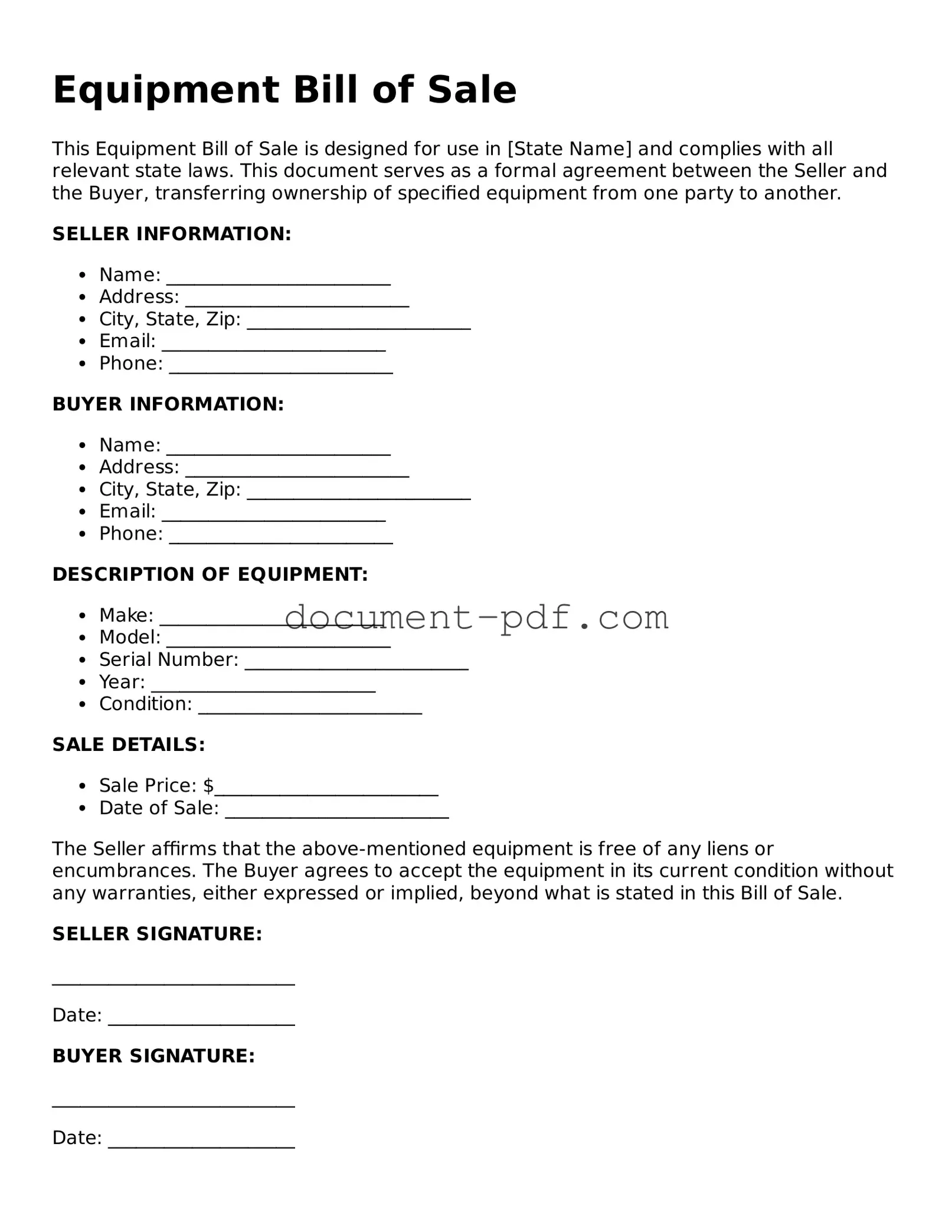Equipment Bill of Sale
This Equipment Bill of Sale is designed for use in [State Name] and complies with all relevant state laws. This document serves as a formal agreement between the Seller and the Buyer, transferring ownership of specified equipment from one party to another.
SELLER INFORMATION:
- Name: ________________________
- Address: ________________________
- City, State, Zip: ________________________
- Email: ________________________
- Phone: ________________________
BUYER INFORMATION:
- Name: ________________________
- Address: ________________________
- City, State, Zip: ________________________
- Email: ________________________
- Phone: ________________________
DESCRIPTION OF EQUIPMENT:
- Make: ________________________
- Model: ________________________
- Serial Number: ________________________
- Year: ________________________
- Condition: ________________________
SALE DETAILS:
- Sale Price: $________________________
- Date of Sale: ________________________
The Seller affirms that the above-mentioned equipment is free of any liens or encumbrances. The Buyer agrees to accept the equipment in its current condition without any warranties, either expressed or implied, beyond what is stated in this Bill of Sale.
SELLER SIGNATURE:
__________________________
Date: ____________________
BUYER SIGNATURE:
__________________________
Date: ____________________
Both parties should retain a copy of this Bill of Sale for their records. This document is intended to be a legally binding agreement.
